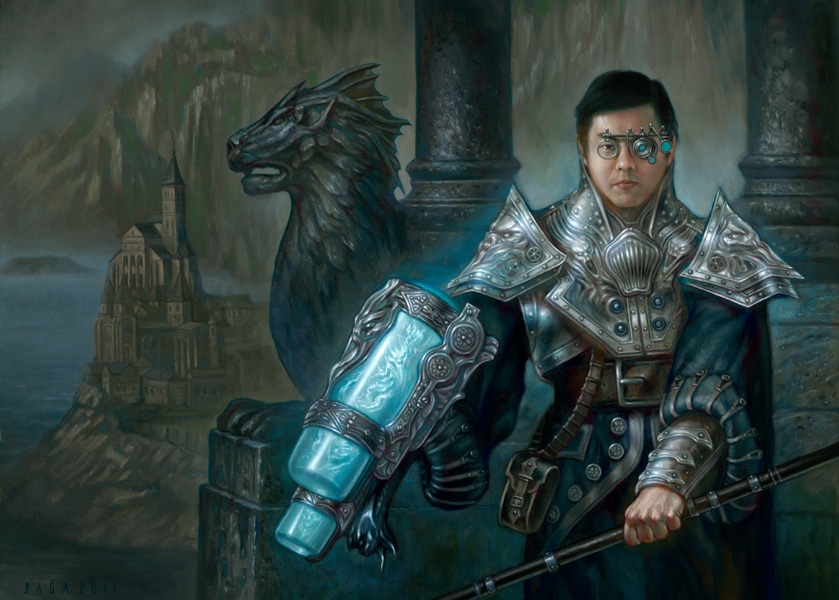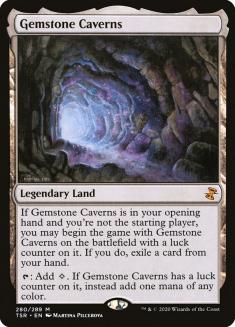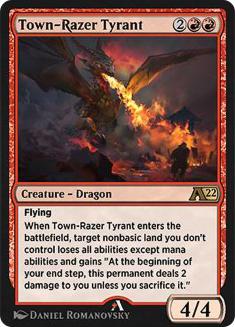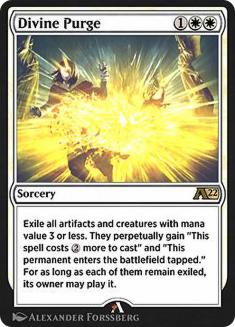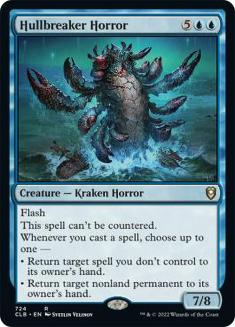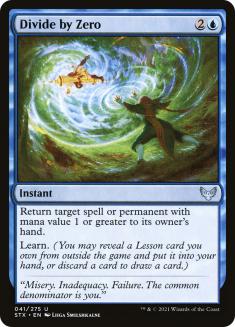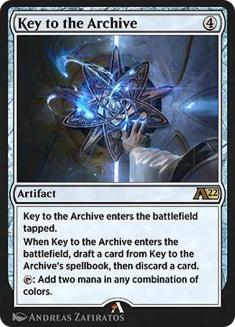Today’s article is another Top 5, where I rank the Top 5 of varied things that have to do with Magic and some that don’t. Remember that most of these things are subjective and this is just my opinion, so feel free to disagree (but you will be wrong).
Top 5 Invitational Cards (player-made cards)
A long time ago, we used to have tournaments called “Invitationals”, which were small, invitation-only tournaments with goofy formats where the winner got to create a Magic card. I only played one of those (the last one), and it was a tournament of sixteen players that got voted in on various criteria such as Limited Expert, Magic Storyteller, and Fan Favorite (which was how I got in).
Over a couple of days, we played Cube Draft, Vintage, Winston Draft, Make Your Own Standard (AKA Build Your Own Block) and Auction of the People with an Alphabet theme, where people submitted Alphabet-themed decklists (one card with each letter of the alphabet) and then the players bid life and starting cards on them (one person would say, “If I have this deck, I’ll start with six cards and 18 life,” and someone else would go, “I bid 6 cards and 17 life for this one,” until all pass).
In my year, the winner was Tiago Chan, who created the card Snapcaster Mage (though that was very different from the card he submitted originally). Since then, we’ve had a couple of non-Invitational cards that were made by World Champions — Fervent Champion and my own Elite Spellbinder.
This rank is not necessarily “the most powerful Invitational cards ever,” but the rank of how good they are as Invitational cards. How happy would I be if they were my own Invitational cards (are they exciting, played a lot, etc.)? I’m not including my own card on the list because I am super-biased, but I am very happy with where it landed.
5. Gemstone Caverns (Tsuyoshi Fujita)
Gemstone Caverns is not a traditional Invitational card — it was submitted in 2005 by Tsuyoshi Fujita, but he did not win the event (Terry Soh did, creating Rakdos Augermage). There was, however, a fan vote on which card to print outside of the winner, and Fujita’s card won. This was his original design that eventually became Gemstone Caverns:
Since Fujita didn’t win the invitational, his card doesn’t have his face on it, but it’s very cool nonetheless, and the design retains its core functionality (which doesn’t always happen — for example, Jon Finkel submitted a Wrath of God variant and ended up with Shadowmage Infiltrator).
4. Solemn Simulacrum (Jens Thoren)
Solemn Simulacrum is a cool card. It’s certainly not oppressive or super-powerful, but it’s fun to play with (it advances your own gameplan in two nice ways) and it’s the only Invitational card to be colorless other than the one above, so it can go in a lot of decks (though funnily enough it was submitted as a Simic card, and then made colorless after). It’s also a big departure from the traditional model of “two-mana bear.”
Solemn Simulacrum had a Standard-legal reprint in Core Set 2021 and saw plenty of play, including in Pro-Tour winning decks. It has aged very well, which is hard to accomplish. Usually cards are too good or too bad later on.
3. Snapcaster Mage (Tiago Chan)
Snapcaster Mage is likely the strongest of the Invitational cards, and it has seen a lot of play, so it hits a lot of the boxes I’m looking for, but it has one big miss that’s very important; people don’t even know it’s an Invitational card. It came so long after the Invitational (it was released in 2011, four years after the Invitational took place) and it was so different from the original design (the original was a land that had “Channel 2UU: Counter target spell”) that a lot of people don’t even associate it with Tiago and don’t know it’s an Invitational card.
So, as a card, it’d be first, but if we’re ranking it as an Invitational card, it’s third, because if I have a card, I want everyone to know it’s me, and I feel like Snapcaster Mage misses the mark here a little bit.
2. Dark Confidant (Bob Maher)
Dark Confidant is a powerful card (second-strongest Invitational card in my opinion) that’s been played a bunch in all formats. This is what I look for the most in an invitational card — longevity. Basically, I want the card to be played as much as possible for as long as possible, and this means seeing play in “older formats,” which Dark Confidant has done in spades. It’s traditionally a Jund card above all else, but it’s seen play in all sort of aggro and even control decks as well, so it hits all points of the spectrum.
Most importantly, it’s clearly an Invitational card, and its common nickname is “Bob.” There are probably a lot of people who have never heard of Bob Maher otherwise but that know this is his card.
1. Meddling Mage (Chris Pikula)
Meddling Mage is not the most powerful Invitational card, but I think it’s the coolest because it’s just so completely different from other Magic cards and it was even more distinctive when it was released. It’s a gold card, which is not something I’d be looking for, as it limits its playability. But despite being a gold card, it has seen an incredible amount of play in all formats, which speaks to how powerful the design was. It’s a card from 2001 that was reprinted and saw play again, and sees play even now twenty years later.
And, even though Wizards of the Coast (WotC) tried their best to erase it by printing it several times with completely different art, most people still know it’s Chris Pikula’s card, which is what you want if you’re an Invitational winner.
Top 5 Marvel Movies
I believe the Marvel movies are overall of a very high quality, and it’s hard to choose my favorite five, but here’s the list.
(As an aside, I have not watched the new Spider-Man movie yet. Also this list will potentially have spoilers for the movies.)
5. Captain Marvel
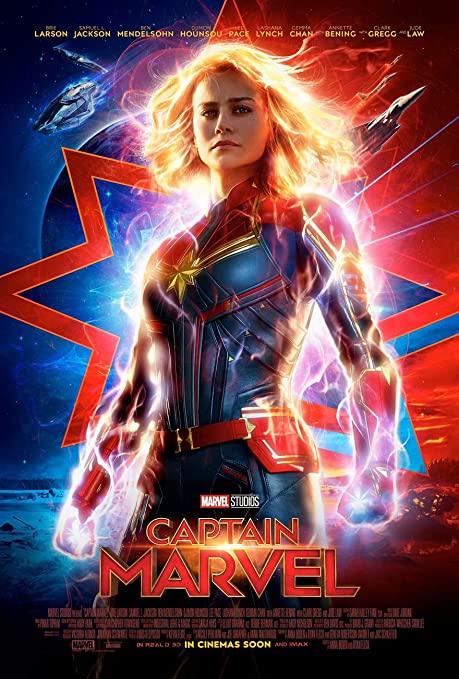
This is probably the most controversial entry in this entire article, as I know Captain Marvel was not the most beloved of Marvel movies. I, however, really enjoyed it, even if I think the existence of Captain Marvel makes the other movies more awkward, as they need to do all sorts of mental gymnastics to justify the fact that she’s not singlehandedly solving everything.
4. Spider-Man: Homecoming
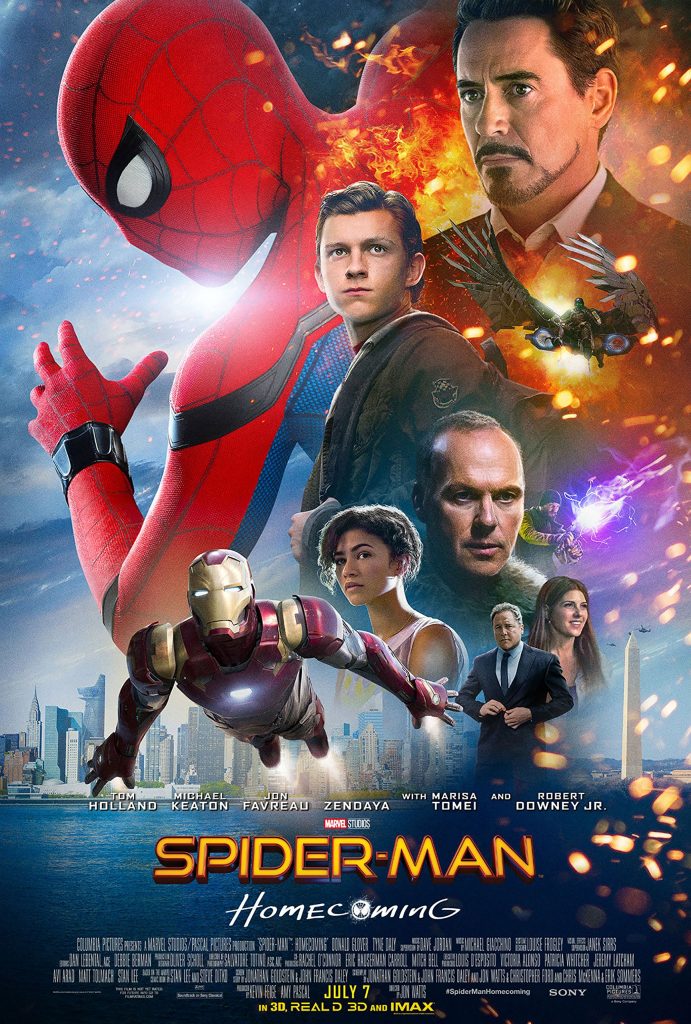
I’ve always liked Spider-Man, and I think MCU Spider-Man is the best of them all. It’s a departure from the comics and the cartoons I used to watch for sure, but it’s just really fun. I enjoyed both Spider-Man movies from the MCU (again, I haven’t watched the third one yet), but I think Homecoming is probably a little bit better. Far From Home is probably #6 on my list though.
3. Doctor Strange

Doctor Strange is my favorite character in the MCU. After playing Magic for so long, I guess I have an affinity for Wizards, but I also like what they’ve done with the character and the actor. The plot is not necessarily the best of all the movies, but it’s not bad either, and I found all the “reality distorting” effects super-well-done. Of all the movies to come out next year, Doctor Strange 2 is the one I’m looking forward to the most.
2. Avengers: Endgame
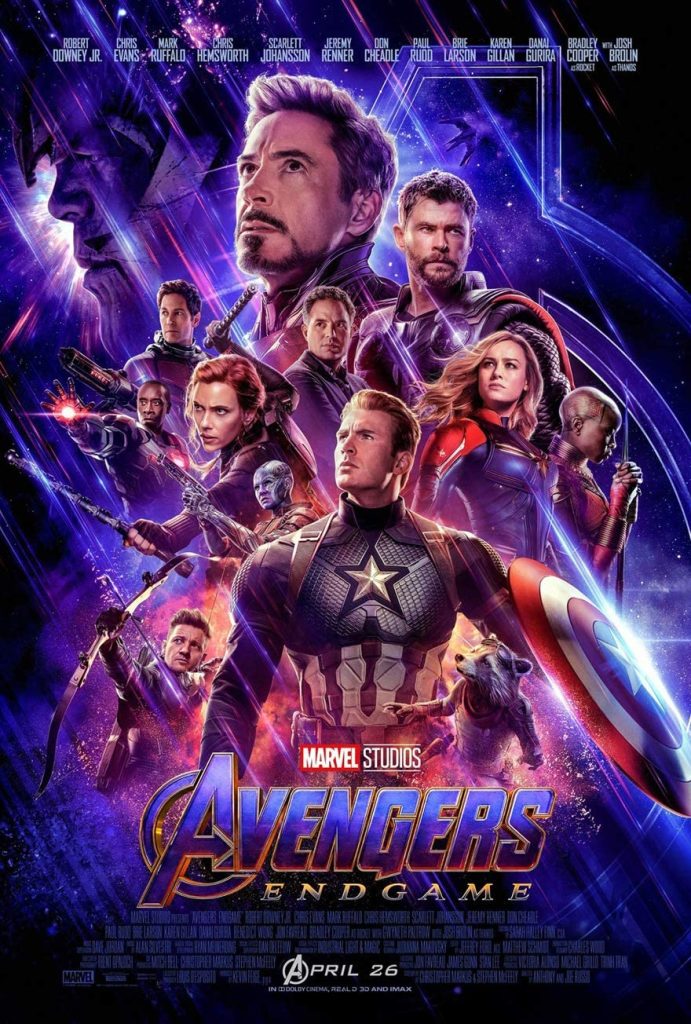
Avengers: Endgame is an incredible movie that was definitely worth all the hype it got. It could easily have been #1, but I like my #1 a little bit more.
1. Avengers: Infinity War
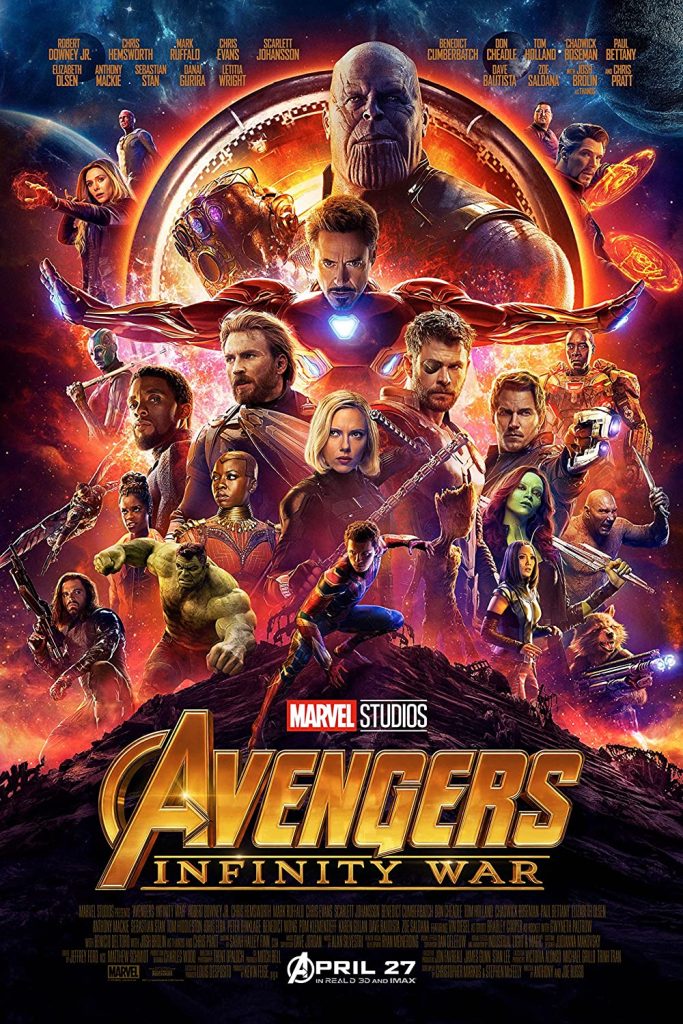
It might be a bit controversial to have Infinity War ahead of Endgame, but for me it comes down to the characters, as the quality of the movies is very similar. As mentioned before, my favorite MCU character is Doctor Strange, and my second-favorite is probably Spider-Man, and they play a much bigger part in the first movie, since they are, you know, actually alive for most of it. Hawkeye and Black Widow are probably my least two favorite Avengers and they feature a bit more heavily in this movie.
Top 5 Improvements Magic Arena Needs to Make
I consider Magic Arena to be a vast improvement over any other form of online Magic, but that doesn’t mean it doesn’t have some big flaws. I’m going to avoid the low-hanging fruits of “it should be cheaper” and “it needs to be more stable with fewer bugs” and instead focus on some ways it can improve while retaining its prices.
5. Deleting Multiple Decks at Once
Every time the format changes or a tournament passes, I want to delete like 25 decks, and every time I have to delete and confirm them one by one. It would be very helpful to just be able to select them all and delete + confirm all at once. This is a small quality of life change that I believe would be easy to implement and would just make me feel better about using the program.
4. Refunds for Changed/Suspended Cards
Right now, the policy for refunds is extremely unfriendly to the customer. If a card gets outright banned I get a refund, but if a card gets “suspended,” which is the same as banned but with a different name, I do not. If a card gets nerfed, which is the same as a ban a lot of the time, I also get nothing. This is a stingy policy.
There’s the argument that “the card is still playable somewhere”, but what if I wanted to play it in a specific place? If I crafted Luminarch Aspirant to play Historic and it’s changed in Historic, I deserve my wildcards back, even if it’s still playable in Standard, because I’m not going to play it in Standard. I’m not even going to talk about all the other cards that are now useless because of a nerf (sometimes you craft an entire deck that ceases to exist), but I feel like giving wildcard refunds for literally the cards that changed should be automatic. Right now it doesn’t happen.
3. Changing the Sideboard Interface
When they made the change from fifteen to seven sideboard cards in Best-of-One, they created a lot of problems for Best-of-Three sideboarding. It’s just an ugly and nonfunctional display, and it also comes with a lot of bugs; sometimes you challenge a person and half of your sideboard doesn’t appear.
I believe they need to either completely revamp this interface or simply revert back to fifteen sideboard cards everywhere, as I don’t think going from fifteen to seven was solving a problem that actually existed. Sure, cards like Lessons get better with fifteen slots, but can you really not accomplish all you want with seven? And if they get just a little bit better, who cares? It’s definitely not worth the trouble we’ve been going through.
2. Duplicate Protection
Right now, I can keep opening cards that I already own maximum copies of (even with the same art!) and I believe this is unacceptable. There is no scenario I should open a booster to find out my rare is Fabled Passage when I already have four identical Fabled Passages and it’s literally useless.
The older you go, the more absurd it gets — it’s possible for a person to have 24 copies of Duress, twelve of which will have the exact same picture. How can it be okay for me to have to pay for a card that I already own when extras have absolutely no use?
1. Dusting
Dusting serves a similar role to duplicate protection, except it’s better for some things and worse for others. For those who are unaware, the term means to “destroy/uncraft” certain cards in return for some of the currency, usually around 1/4th of what it took to craft it. In Hearthstone, for example, you need 400 Dust to create an Epic card, and Disenchanting it will generate 100 Dust. You can disenchant four Epic cards to create a new Epic card, or several common cards.
This is certainly not a generous system (75% of the original price is an insane vig), but at least it gives you a use for cards you no longer need. If I’m a Standard player and my cards rotate, I have absolutely no use for them under the current system. Sometimes, there are scenarios in which I want to try a deck out and I craft, say, eight mythic cards. After two games I decide the deck is bad, and these eight mythic wildcards are gone forever. There’s nothing I can do with the cards I just crafted. Given how non-generous being able to return them for 25% of the price is, it feels like something that should just exist in the game.
As a bonus, this would also be a way for people to acquire wildcards if they need them, which is sorely lacking in the game right now. If I need to craft a specific card, then I need to keep opening boosters until I open the right number of wildcards, and that’s silly. There’s a Vault, but it ain’t cutting it and it’s basically a cosmetic for how much it does. I think that, if Arena were to implement some sort of dusting, the game would instantly become 100% more user-friendly.
Top 5 Party Games
A lot of Magic players are big on board games; I like them too, but not nearly as much. As a general rule, if your game takes very long to set up, explain, or play, it’s not for me. Instead, I’m a huge fan of party games, fast-paced games that require little or no setup.
5. Decrypto
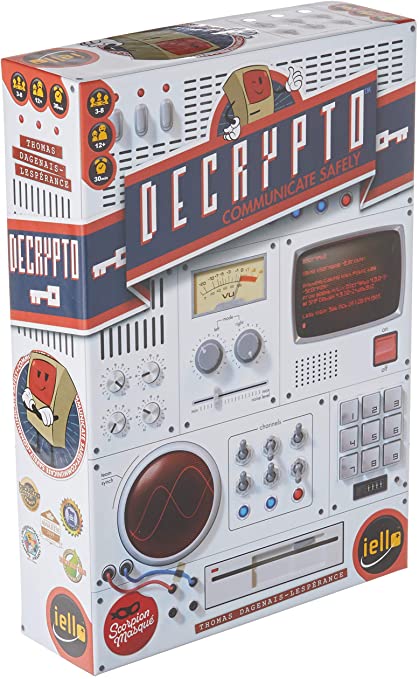
Decrypto is probably the slowest party game on the list. It consists of splitting into two teams and then giving clues that everyone can hear, but that your team will understand with the context they have whereas the other team won’t. It’s sort of a more sophisticated and complicated Codenames.
4. One Night Ultimate Werewolf
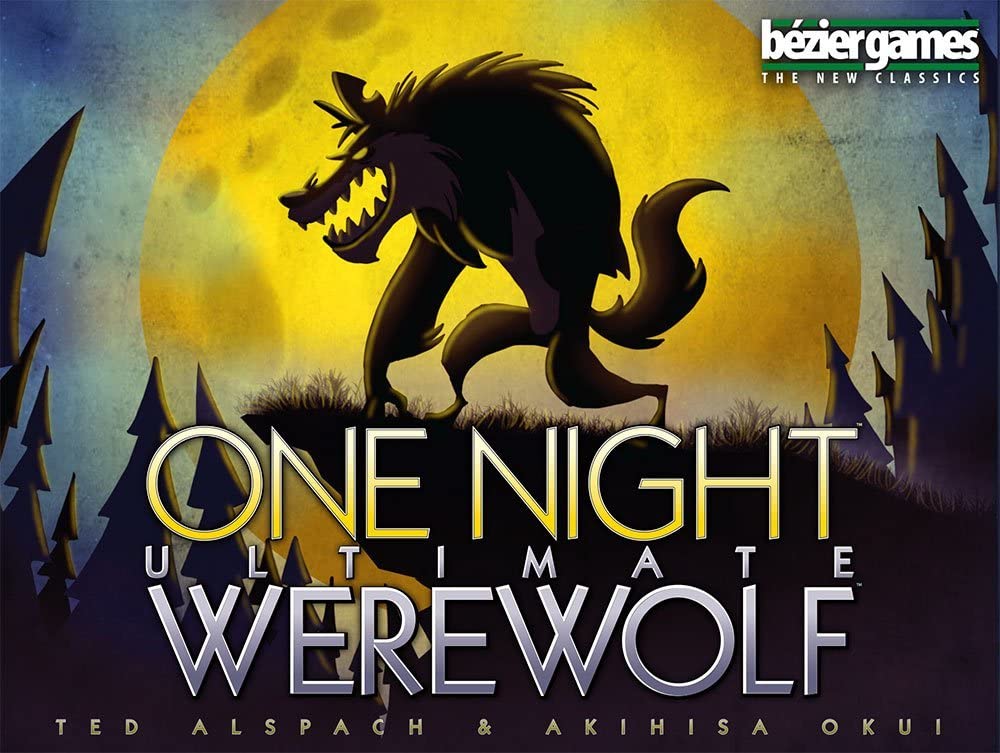
I’m not a big fan of Werewolf because of two major issues. The first is that it takes too long; the second is that whoever dies leaves the game. One Night Ultimate Werewolf solves both of these issues. As the name says, it’s one night only, and instead of affecting players, you affect their roles (so, for example, someone can swap the roles of two people and in the end you’re not even totally sure if you are the Werewolf). I’ve found it to be a much better version of the game, and much more fast-paced.
3. Wavelength
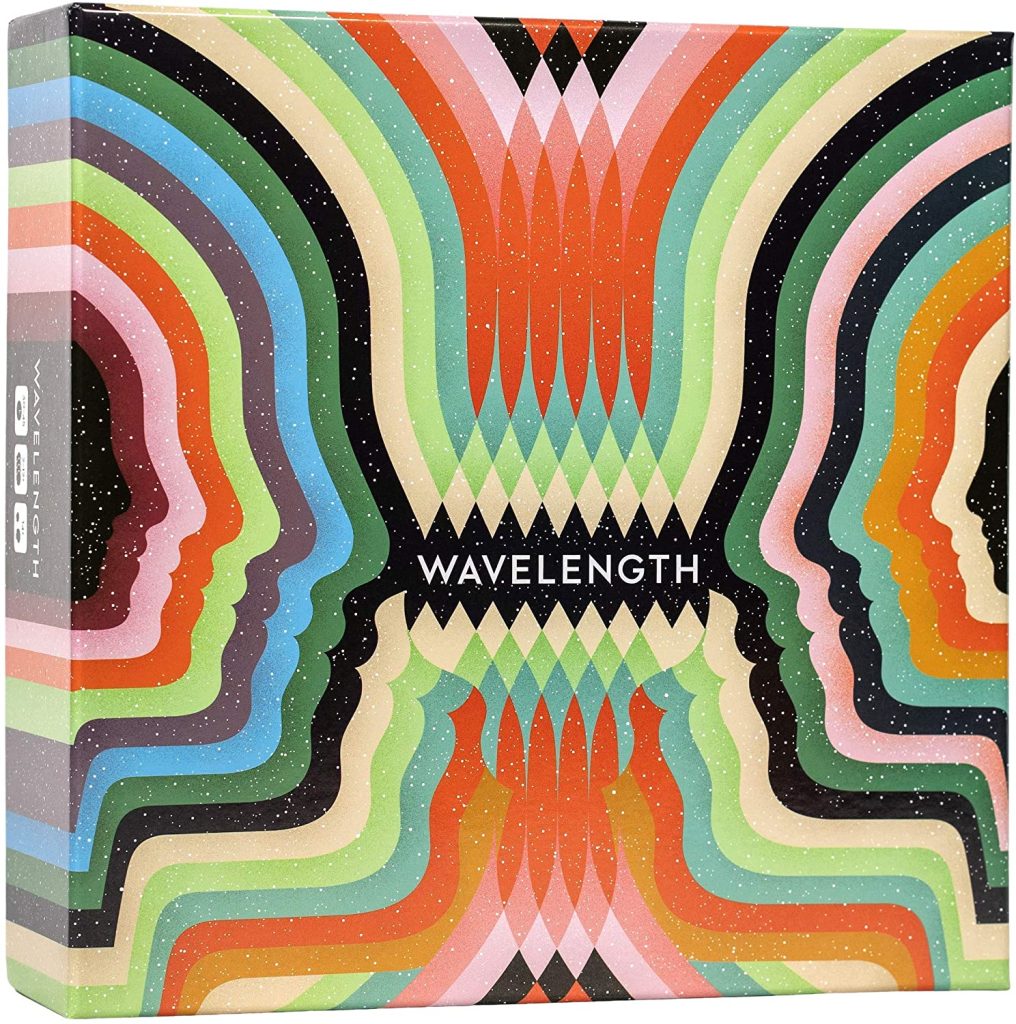
In Wavelength, you get a random scale with two opposites and you then draw a random location in that scale. Then, the goal is to give your team a clue that will tell them where in the scale it’s located (they know what the scale is, but not the location they need to find). For example, if the scale is Hot-Cold and you get a spot 75% towards hot, you need to give a hint that will make your team guess it’s 75% towards hot – so it’s not going to be anything cold but it’s also not going to be “the sun”.
This game is cool to play with people you know well, but it’s also cool to play with people you don’t know as much because you have to guess where they stand on certain things. For example, someone we played with once thought the release of Jumanji 2 was very much towards “culturally significant” in the scale.
2. Catch Phrase

Catch Phrase consists of having a random word and making your team say that word – that’s it. It’s very simple and can be played with just a device that you pass from person to person, or even a phone. We used to play that a looooot in Magic tournaments between the rounds and I’ve always found it very fun, even though sometimes it was hard for me as a non-American (both because of the language as well as cultural references).
1. Codenames
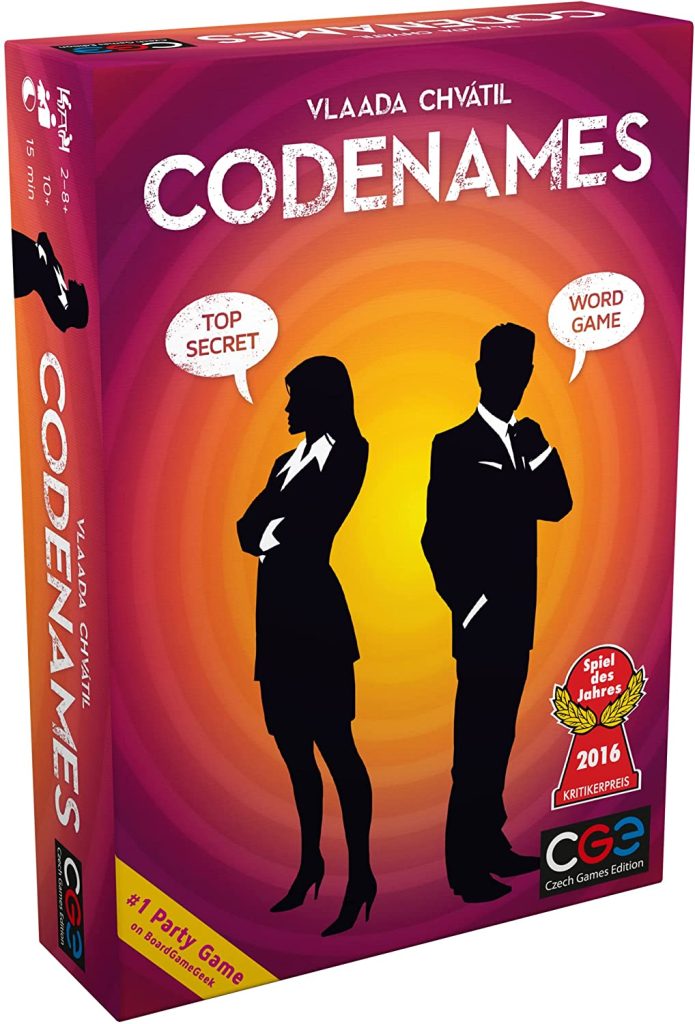
Codenames is a game where a board with words is laid out (and the words usually have multiple meanings) and the players are divided between the Blue and the Red team. Then the clue giver for each team looks over a model that tells them which words in the board are theirs, which words are the opponent’s, and which words are neutral, and the goal is to get their team to find the right words by giving one-word clues. For example, if some of my words on the board are “Ivory,” “Point,” and “Bell,” I could say “Tower” and try to have my team guess all three, but if they are “Bell,” “Ghost,” and “India,” I could say “Pepper” instead. It’s a lot of fun and the only downside for me is that it requires a lot of English knowledge, so I can’t play with my extended family.
Top 5 Alchemy Cards That Need to Be Changed
Right now, Alchemy is not in a great spot. The control decks are simply much better than anything else in the format and they have no real predator. Luckily for us, Alchemy’s design lets it be ever-changing, so the next batch of nerfs and upgrades could be a big improvement. Here’s what I would change:
5. Town-razer Tyrant
Town-razer Tyrant is a very powerful card, but I’m not sure it needs a power-level change just yet. What I am sure it needs, however, is an interface change — two, in fact. Or three, if you consider “capitalizing Razer” a change that needs to happen. [Copy Editor’s Note: Preach!]
First, I believe it should give you a window to respond if you have something to do on your upkeep. It’s incredibly common to want to cast an instant before your land is blown up (or before you make the choice), and right now the game does not give you the chance to do that. You must manually select it every turn or your land is gone before you can add mana. I believe this card should force a pause if you’re holding an instant.
The second change is that the “Would you like to take an action?” interface is absolutely horrible. At the Arena Open, I accidentally destroyed my land when I meant to take two (which I inferred as “take an action”), and a friend of mine did the exact same about an hour later. There are safeguards and you can memorize it or read the minuscule text, but the fact that you read about this getting mixed up so often means they would probably be wise to do something to address it.
4. Divine Purge
Right now, I believe Divine Purge is too oppressive to aggro decks. It’s effectively a three-mana sweeper that also takes artifacts, except sometimes it’s better because your own stuff dodges it due to being more expensive. You might think there aren’t many artifacts around, but it deals with Clues, Treasures, and Blood tokens, and these are quite common.
It’s hard to find a balance with this card, as at four mana it would just be another Wrath of God, but we don’t have a good sweeper that costs four, so maybe that’s okay. At the very least, I don’t see why the cards need to enter the battlefield tapped. It seems unnecessarily punishing for haste stuff and also an effect that’s very easy to forget and be disappointed about when you realize what just happened.
3. Hullbreaker Horror
Hullbreaker Horror wasn’t that bad of a card in Standard because the Alrund’s Epiphany decks just went over the top of it, which meant it wasn’t even always maindeckable. In Alchemy, it’s the default win condition of the format, and boy is it miserable. Having a creature that has flash, can’t be countered, can’t be killed, and bounces every other permanent you ever cast for the rest of the game just isn’t any fun.
My suggestion would be to change Hullbreaker Horror so that it cannot bounce itself, which would allow a lot more counterplay. It’s still a strong card and you still need to keep in removal versus an otherwise creatureless deck to deal with it, but at least it would make it less frustrating to deal with and would give you an opportunity to use the removal spells you’ve had in hand since the beginning of the game. In fact, I would probably go even further and say it can only bounce opponent’s things, so as to stop the silly play pattern of bouncing your own Key to the Archives over and over.
2. Divide by Zero
Right now, Alchemy is a lot of casting the same card over and over again into your opponent’s Divide by Zero and Fading Hope, only for them to cast Lier, Disciple of the Drowned and do it all over again in what is a blatant mockery of its “no counters” clause that is intended to protect players from this exact play pattern. In a sense, it feels like your opponent is just taking all the turns, except you can attempt to play as well, but you don’t really succeed. There’s no real way to play around it either, because if you pass the turn, they will just bounce something instead.
I’m not sure what to do to save this card — I’d probably rather kill it outright than try to make it still playable. My inclination is to make it only a counterspell or only a bounce spell, but not both. This would make it much worse versus either control or aggro. I’m totally fine with that because I think this card has exhausted its welcome already. For the record, my vote is “bounce only,” as the name still makes sense then.
1. Key to the Archive
Key to the Archive is simply too powerful and game-warping. There’s too much variation in its spellbook in the sense that some cards are many times better than others, but at the same time there’s not enough variation (about half of it is just “kill a creature” for two or three mana).
All in all, however, I think the most annoying part of Key to the Archive is how much of a cognitive load it causes just by existing. At any moment you could find yourself with a card that’s a different color from the colors you’re playing, which means you have to be highly conscious of how you play your Forsaken Crossroads and your Pathways.
“Should I choose red here because I might hit Lightning Bolt, or should I choose green because I might hit Putrefy in my Dimir-based deck?” is simply not fun to be constantly thinking about, and debating which off-color Pathway to include in your deck is also not my idea of fun. At the same time, you have to think about it if you’re trying to win, because it does come up and it is relevant.
My suggestion would be to move this card to five mana, where I think it’s still playable but not a must-play. I would also remove Time Warp from its spellbook, as that’s too much of a critical hit, and potentially remove Approach of the Second Sun too, though I appreciate trying to get the game to end. This would not solve my second issue with it, but it would make it less ubiquitous.
Alternatively, you could just make the cards playable with any color of mana, which is the standard for how these cards work. It would certainly defeat a lot of the point of the card, and would make it better because you’re not as vulnerable to artifact removal, but I think it’s worth paying that price to remove the cognitive load of always having to think, “What if?”
Top 5 TV Shows You Might Never Have Heard Of
Here I’m selecting five TV shows that I really like and that you might have never heard of, or that at least are not mainstream. Some of them will be on big streaming websites, but I rarely see discussion about them, and I think they deserve a little more recognition.
5. The Bold Type
The Bold Type is the story about three women who work in a women’s magazine — one is a writer, another a stylist, and the third a marketing person. This show is not for everyone, but what I like about it is that I feel like there’s no fake drama — people don’t suddenly turn evil, betray everyone else, or do things that are completely out of character so that an arc may develop. Even then, the show has done a good job of creating conflicts to solve from things that are realistic. I think it took a turn for the worse in the last season, but it’s still quite enjoyable.
4. Marcella
Marcella is a crime/mystery show about a retired detective who goes back to work after her husband leaves her. I like crime shows in general and Marcella seems to be one of the lesser-known ones that I enjoyed the most.
3. Damages
Damages is the story about a young lawyer who is smart and successful and then starts working for her idol. It’s told in media res, and the ending and the beginning get closer to each other in each episode. It’s a cross between a law show (which I really like) and a crime show and I found it to be very smart.
2. Travelers
Travelers takes lace in a universe where people from the future come to the present and “possess” the bodies of people who are about to die in order to prevent bad outcomes in the future. The plot isn’t exactly new, but I really liked the implementation of this show specifically. Unfortunately, it seems the world did not share my opinion and it was canceled halfway through, but I’d still recommend you watch it, as you get three seasons and an ending that, while not the most satisfactory, is still an ending.
1. The Good Wife
The Good Wife is one of my favorite TV shows and honestly I wholeheartedly believe the only reason it’s not more popular is because the name is very bad. It tells the story of a woman who used to be a lawyer but who quit her practice when she married a politician, and then at some point her husband commits a crime and she has to go back to work starting as a junior employee in a law firm. It’s one of those “big plot + small plot each episode” law shows and it’s excellent.
That’s what I’ve got for today! Hopefully I’ve managed to pique your interest with some of my game/TV show recommendations. If not, at least now you know a little bit more about me!

